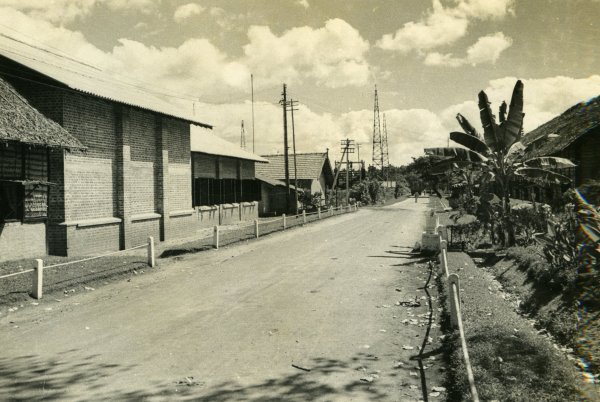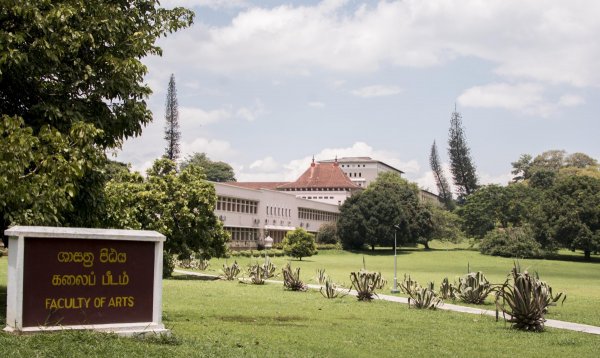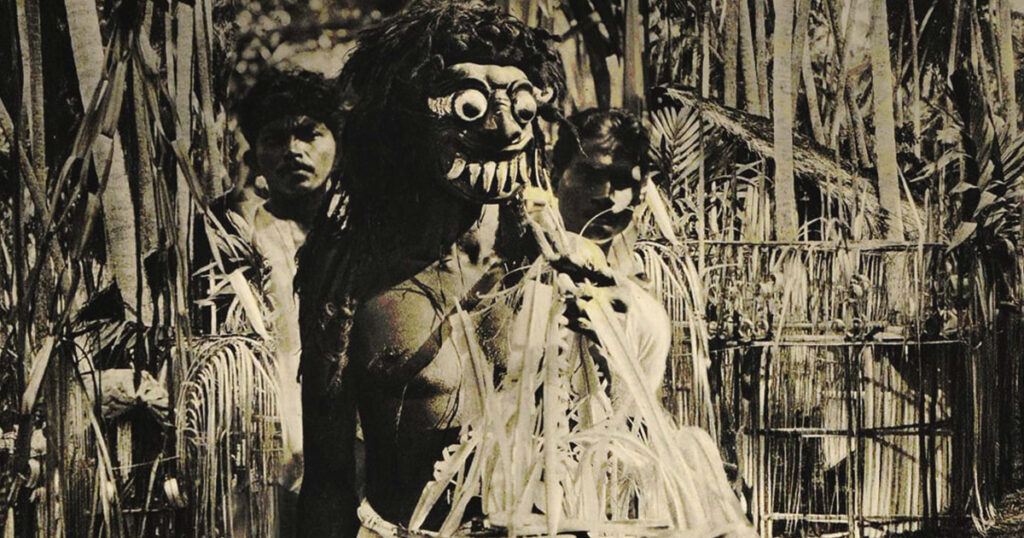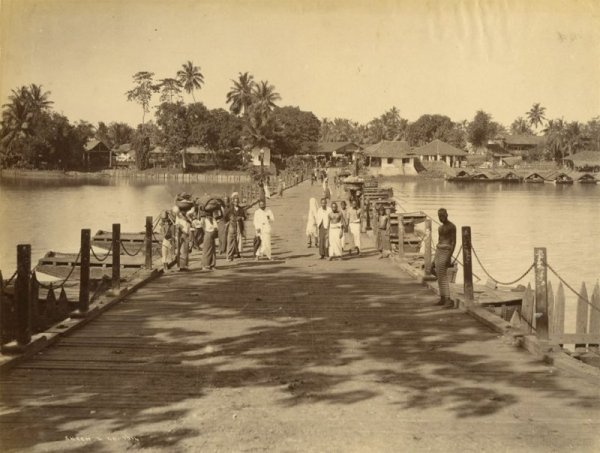
All Hallow’s Eve is upon us, when, as they say, the veil between the human and spirit worlds is at its weakest. All Hallow’s Eve, or Halloween as we now know it, is one of the world’s most popular holidays, right up there with Easter and Christmas. However, this once-pagan holiday is nothing like either of those.
Halloween is a time when people — mostly in the West — pay extra attention to the ideas of ghosts, demons, and malevolent spirits. In the areas that do celebrate Halloween, it would not be uncommon to spot a vampire or two passing by, grinning Jack O’ Lanterns leering at you, and perhaps a zombie or ghoul greeting you while they hunt for treats. Later at night, it would be time to gather around a bonfire and tell your best ghost stories.
Though Sri Lankans don’t traditionally celebrate Halloween with artfully carved-out pumpkins and witches’ hats, that doesn’t mean we don’t have our own spooky tales to share. In fact, Sri Lanka has a rich background in local folklore, many of which more than qualifies as horror stories.
Ghosts, Gods, and Demons: Less spectacle, more everyday occurrence?
In Sri Lanka, it isn’t uncommon to come across places that are believed to be haunted. For instance, I remember my school was supposedly haunted by a young girl, who would occasionally photobomb people in the form of an artful blur. While at university, a similarly bemoaned woman was blamed for the (very frequent) elevator malfunctions. At my very first office, it was believed we had a resident ghost who would communicate with us via a flickering light bulb. I recall we used to say “hello” and “goodbye” to it. It was especially lively when we worked late nights and managed to keep up a conversation. Of course, non-believers would simply say it was just a problematic light bulb, but I almost always got it to switch on and off on request.
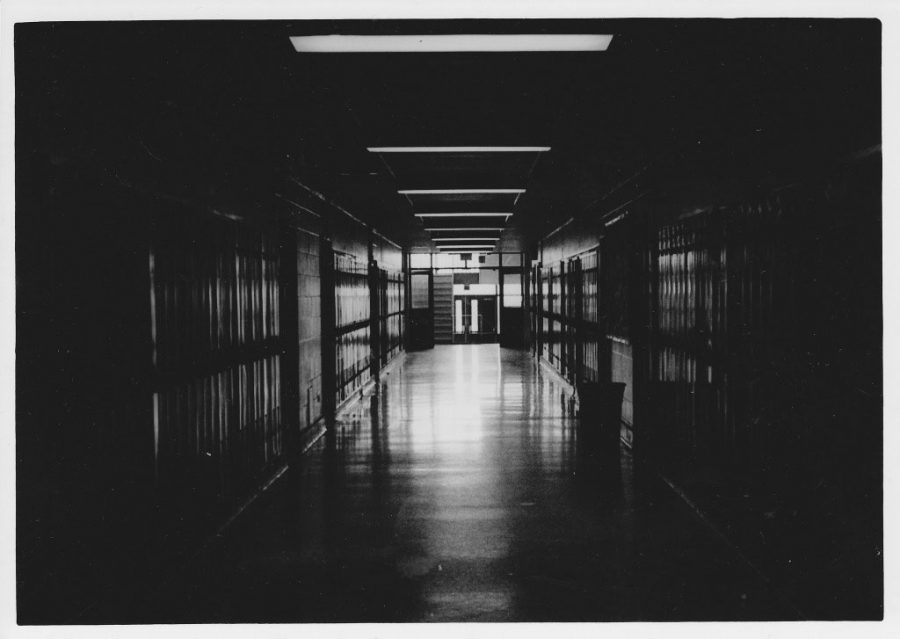
Stories like this are common in Sri Lanka. Unlike our friends in the West, the existence of the supernatural is more ingrained in our everyday culture. However, our ghosts are not always necessarily malevolent. In most movies in mainstream media, ghosts are portrayed as victims of life’s terrible injustices and, as a result, out for revenge, but in our culture, ghosts simply exist.
Nadeesha Paulis, co-author of “Water in my Grave”, who explored many local horror tales in her compilation of this book of local folklore, also observed that ghosts in Sri Lanka are not always bad, although they may come across as a bit spooky. “There are even avathara (ghosts) of animals in our stories. And they might not be jump scares, but their very existence, their unexplained presence, is chilling,” she told Roar Media.
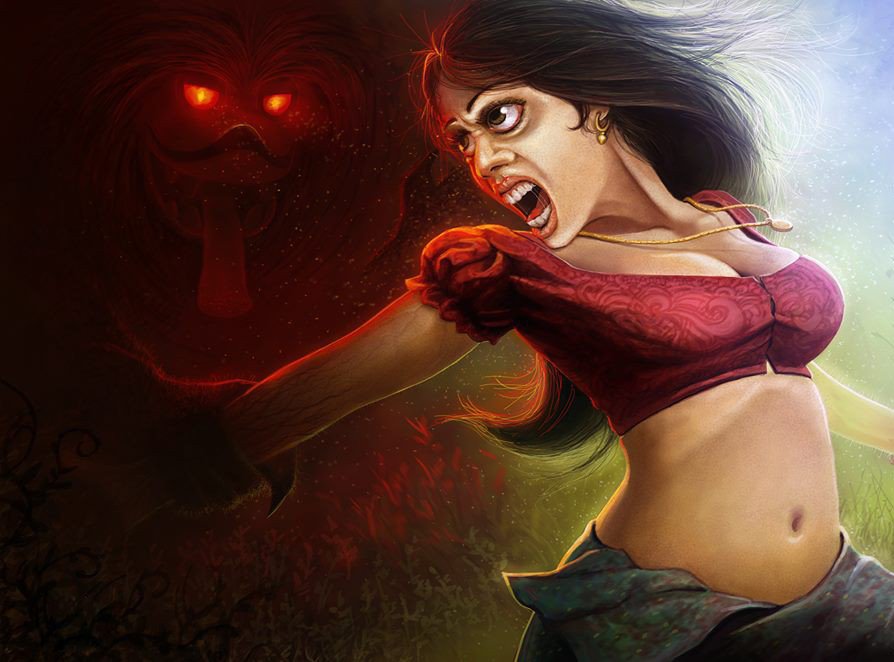
When it comes to local demons, though they are nightmarish in both appearance and description, there also exists a few differences between them and the ones we often see in popular media. The most notable is that the horror they represent is not getting eaten alive, or being ripped limb from limb. They are the harbingers of rot, decay, and disease, therefore they represent a horror very real to Sri Lankans. What’s scary about them is the suffering and death that comes with their presence.
“The ‘accurately depicted’ demons don’t kill you instantly or eat you,” explained Achinthya Amarakoon, an artist who regularly uses local folklore for artistic inspiration. “They just cause sickness.”
There may be a simple reason behind this. “Sickness and death, the most direful calamities of life, with the many dreadful circumstances generally attending them, are, of all causes, those which would naturally, in those early ages of the world, excite, in an ignorant and simple mind, feelings of supernatural terror,” observed Dandris De Silva Gooneratne in 1865, in On Demonology and Witchcraft in Ceylon. An interesting point, one which may explain why Sri Lankans have different demons depicting different types of diseases, and why many local rituals and dances are, in fact, to ward off disease.
Another defining characteristic of beings of horror is that they don’t even attempt to look human. Instead of a weapon or bloody appearance, our demons are simply grotesque. Two good examples are Mahasona and Reeri Yaka. In fact, one look at our traditional masks, and any concept of ‘humanness’ goes out the window, as observed in South Asian Folklore: An Encyclopedia: “In Sri Lanka, masking practices relate to the folk religions and folk dramatic traditions of the Sinhalese people,” it said, adding, “Sri Lankan masks may also be classified according to their form and the position in which they are worn. These types include elaborately dressed masks hollowed from within, which cover the entire head of the wearer.”
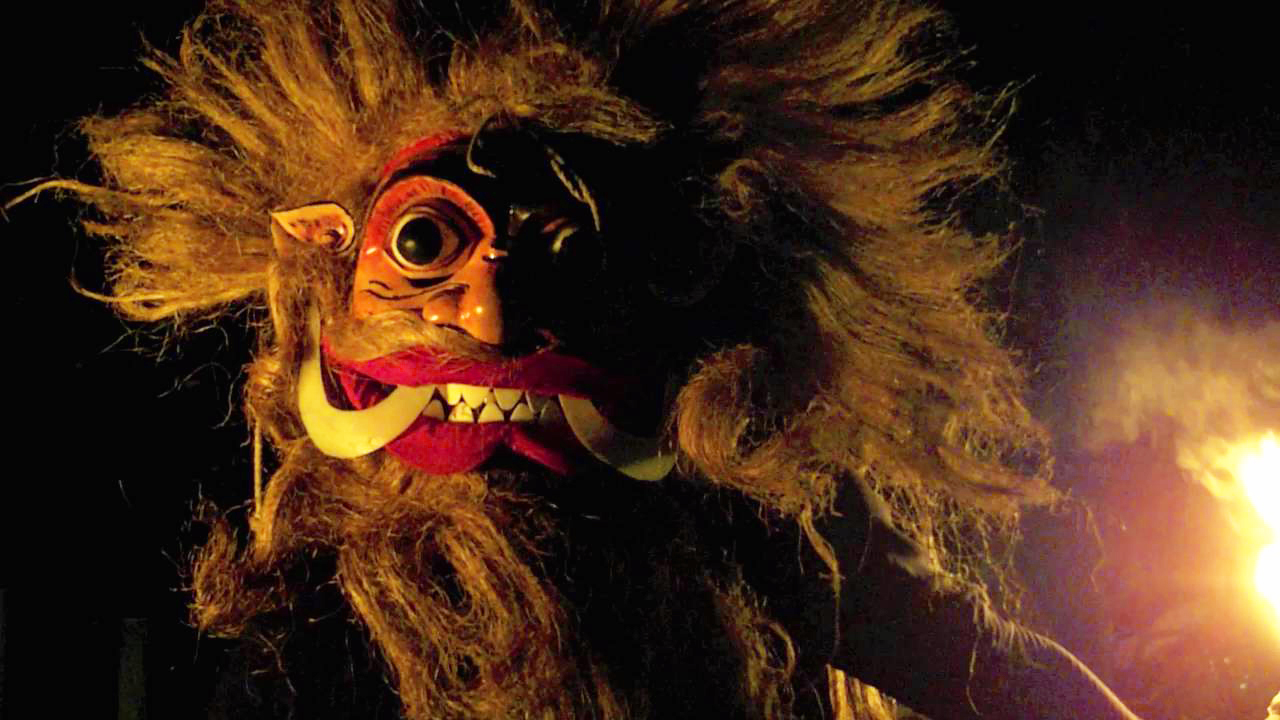
A third, but perhaps most baffling, difference is that the line between God and demon is noticeably blurred, with our ‘Gods’ not only often sporting a clearly inhuman visage, but certain characters appearing to be once a God, now a demon, or even routinely switching between the two. Local demons also have a clear structure and society, apparently led by “Wessamony this dreaded king— whose subjects throng every part of the sky—carries in his hand a sword of gold, of such wondrous power that when he is displeased with any of his subjects, it flies out of his hand on its own accord, and, after cutting off the heads of a thousand offenders with the rapidity of lightning, returns to his hand again,” according to De Silva Gooneratne.
(Un)popular demons and witches
According to local folklore, demons and Gods are very much like humans in mannerisms, and the only problem is that the demon sect causes suffering, illness, and death. Some of the more popular characters in our folklore include:
Mahasona
Arguably the most well known, his appearance is mostly human if you choose to ignore the fact that his head is that of a sloth bear, which is on backwards. Also, the fact that he can appear as/possess black dogs, which is where the local distaste of dark-pelted canines apparently comes from. Attacking in stark daylight, Mahasona kills his victims with one blow to the spine, usually leaving the imprint of his hand on their skin.
Paulis, in her book, describes him as “said to be 37 m tall, bear-headed, armed with a pike, blood-red skin, with three eyes and four hands, rides a pig while drinking the blood of an elephant he carries in his right hand”.
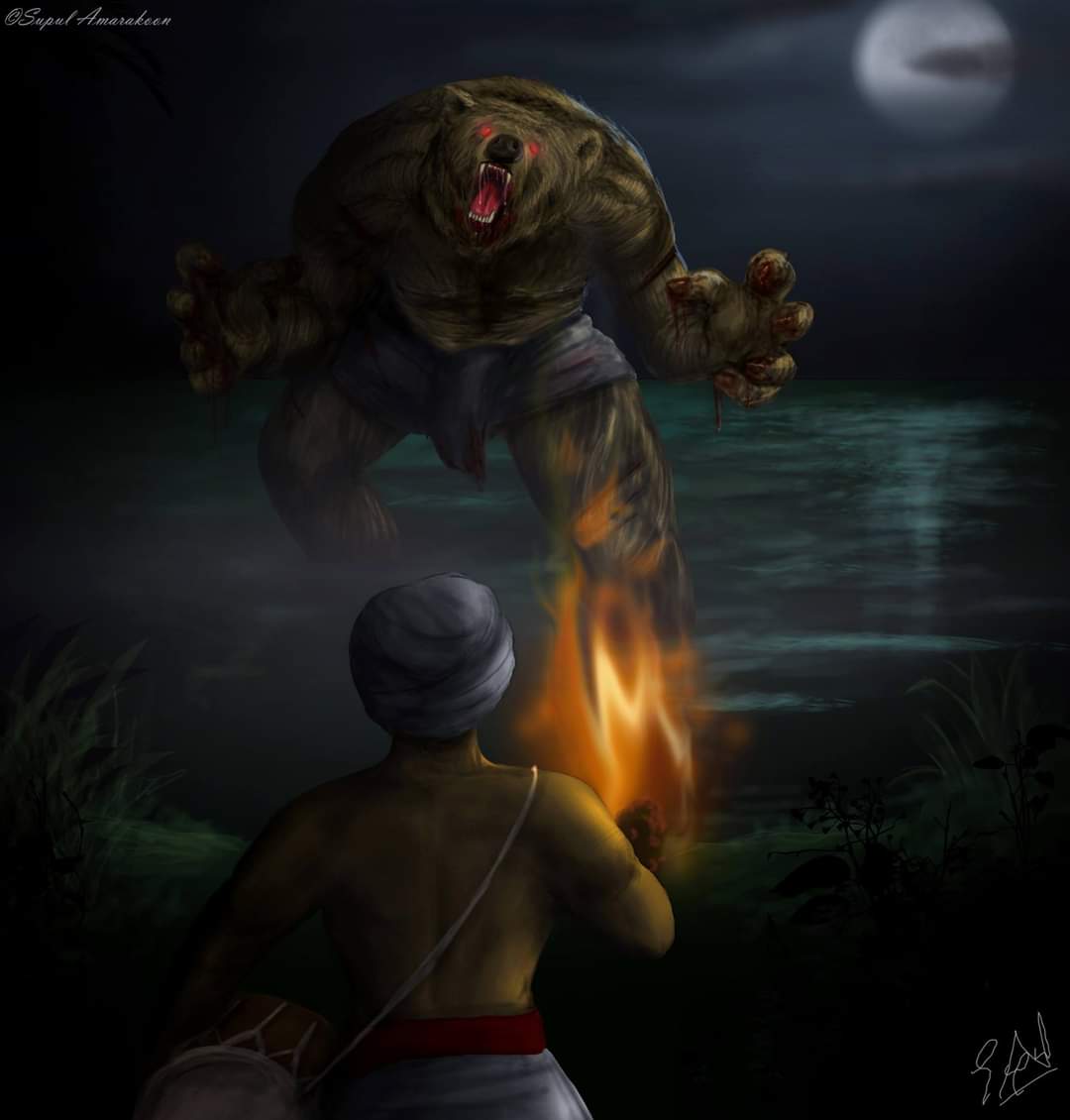
Despite his current gory state, as the tale goes, Mahasona was once the proud warrior of King Dutugemunu. In an unfortunate turn of events, he was decapitated in a duel with a bear, and (this is where accounts wildly vary) in a misguided attempt to save him, a spirit tried to replace his head with that of a bear. Unfortunately, in their haste, the head was attached backwards. Whatever his origins, there is no doubt that Mahasona is now a staple in local horror lore.
Reeri Yaka
Also spelt Riri Yaka, the demon is said to be related to diseases of the blood, and therefore has a fittingly red body. Strangely, however, that body is humanoid but short. His head, in contrast, resembles a monkey’s. “He’d stand by the dying man with a rooster in one hand, a club in the other, and the corpse of a man in his mouth,” Paulis noted. Other stories tell of him sitting on your stomach as you lay dying of a blood-related disease. When he’s not scaring you to death, this yaka is described as a four-armed, blood-smeared, monkey-faced little man who haunts graveyards and crematoriums. He is described to be as strong as a bull, rides a pig, and carries a sword, a rooster, a parrot, and a human head in each of his arms. A person possessed by the Reeri Yaka is said to look pale, listless, and anaemic.
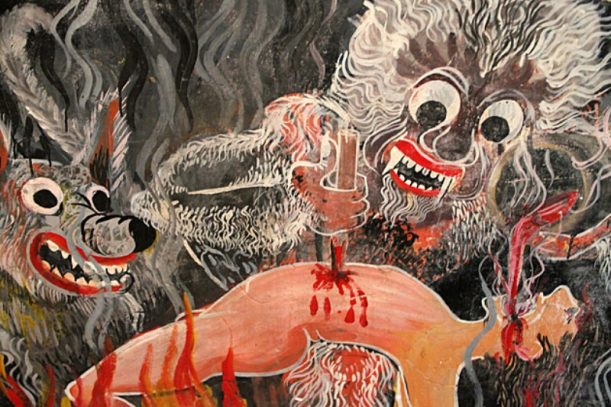
Kalu Kumaraya
Mirroring some characteristics of the Irish Kelpie, Kalu Kumaraya is the local incubus. Some stories describe him riding a horse, other stories have him hanging around, waiting to seduce innocent women and bestow sickness upon them. Kalu Kumaraya is believed to have once been an ancient Sri Lankan prince who plotted to steal his father’s throne. When his attempt failed, he took his own life but was punished by being restored to this world as a demon instead of being allowed to pass on. While the origins of his tale were most probably a way of scaring girls into submission, Kalu Kumaraya has since turned into a local legend.
Kadawara
One of those instances where God/demon seems to be one and the same is embodied by Kadawara. Much like Dr. Jekyll and Mr. Hyde – to those familiar with the story – Kadawara is said to have formed a lake by building a dam and is thus frequently depicted as a God. The lesser-known aspect of the story is that of one fateful night he sacrificed himself to save his beloved lake. However, the dam was broken by some humans, and Kadawara became a wrathful spirit, seeking vengeance in the form of Kadawara Yaka. The catch here is that, if you meet him, you won’t know which version you’ve met. All you can do is pray it’s the God and not the demon.

Kinduri
We’ve all (unfortunately) heard stories about pregnant women who have miscarried/died due to abuse during pregnancy. It is, then, no surprise that a horror story was born out of such a story. According to tales, Kinduri is a female spirit who was once human. As a result of the abuse she endured while pregnant, she (and her unborn child) died. She now goes from house to house, knocking on doors. While you’re safe if you’re a female opening the door, the same cannot be said if you’re a male. Why our ancestors wanted the women to open doors late at night is a mystery, but one must wonder if Kinduri didn’t evolve to become Mohini at some point, after being reunited with the child she never had.
Maha Kola Sanni Yaka
The daha ata sanniya (eighteen sanniya) is a term familiar to most Sri Lankans, and these sanni are, basically, ritual dances to banish 18 types of disease. The final and most fearsome is the kola sanniya, and it has its own demon, the Maha Kola Sanni Yaka. While there is no physical description available of this demon, his actions more than make up for it. His origin story claims that one King Sankapala had to leave his kingdom. While he was away, it became clear that his wife, Queen Asupala, was pregnant. When the king returned, he accused the queen of adultery. She was not able to convince him of her innocence and was executed. At the moment of execution, she gave birth to a child, who then fed on his mother’s corpse, according to some accounts. The child proceeded to collect 18 poisonous plants (believed to eventually become the minor sanni demons) and returned to the city as the demon Maha Kola Sanni. He killed his father, drank his blood, ate the flesh off his bones, and spread sickness and death in the realm.
Wessamony
No account of local demonology would be complete without Wessamony (also spelt Wesamony, Wesamuni, or multiple other ways), the King of them all. While we did mention him briefly earlier on, he is also said to have a “penal code” consisting of most of our typical punishments reserved for hell, numbering 32 in all. According to De Silva Gooneratne, “the mere mention of his name is sufficient to make any of his subjects tremble with fear”. If you consider how grotesque his subjects are, you can imagine what kind of demon king it would take to make them fearful.
Dying Narratives
Despite the fascinating backstories and clear dominance of these beliefs among a lot of people (my own mother was very happy to provide me with some of these descriptions), these tales are simply not heard of or narrated as often anymore.
Achinthya believes that among the Sri Lankan art and visual community, the lack of narratives or depictions is due to practical reasons. “The physical descriptions of these demons are very difficult to be accurately depicted in art,” she shared. “It’s very difficult to invoke a horrific feeling when you’re portraying a sloth bear-headed man attacking in daylight, for example. Even in stories, I’ve seen a lot of writers taking the liberty of depicting Mahasona attacking at night.” However, it is also entirely possible that the lack of prominence these stories get, combined with the vague and sometimes different narratives our own families pass down, also contribute to their diminishing prominence, she added.
Another possibility is that the supernatural is so ingrained in Sri Lankan culture that we simply do not treat it as noteworthy. While we may all know Mohini, who has featured in at least one memorable TV commercial, one would hardly think to document her story.
Whatever the reason, Sri Lankan folklore is fading into obscurity, and some believe it is up to us to keep the tales, memories — and occasional horrors! — of the Sri Lankan supernatural alive and active.


